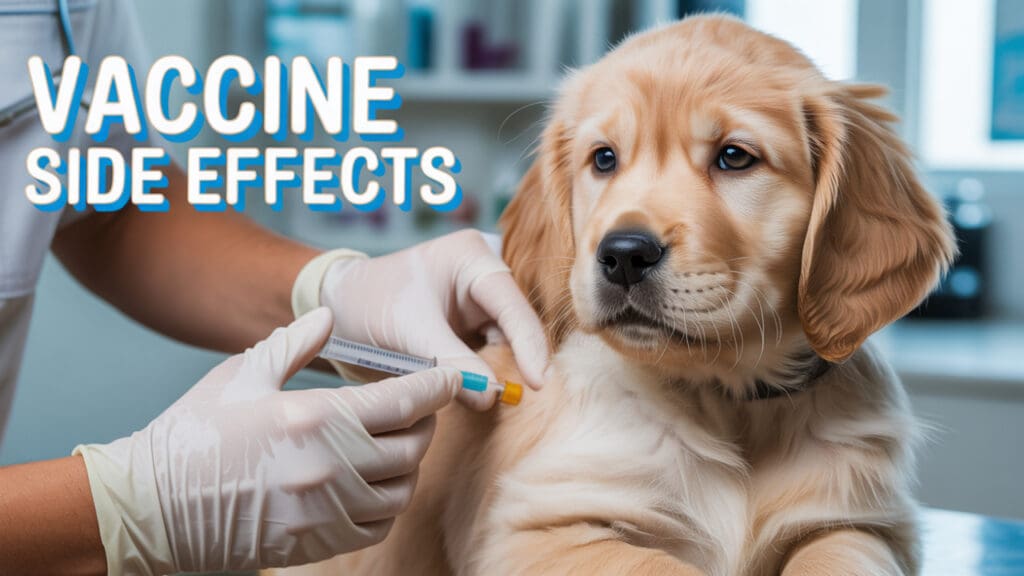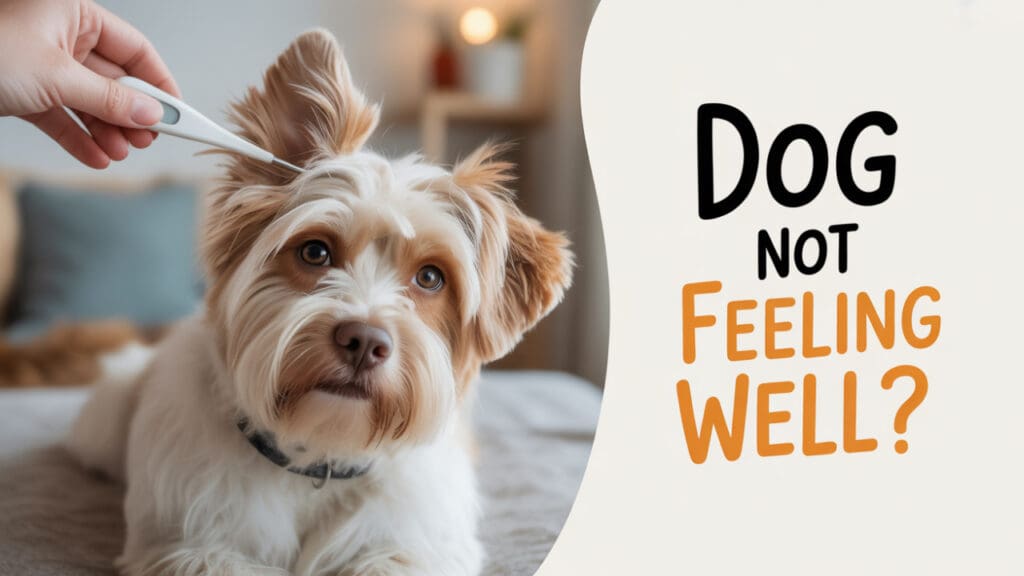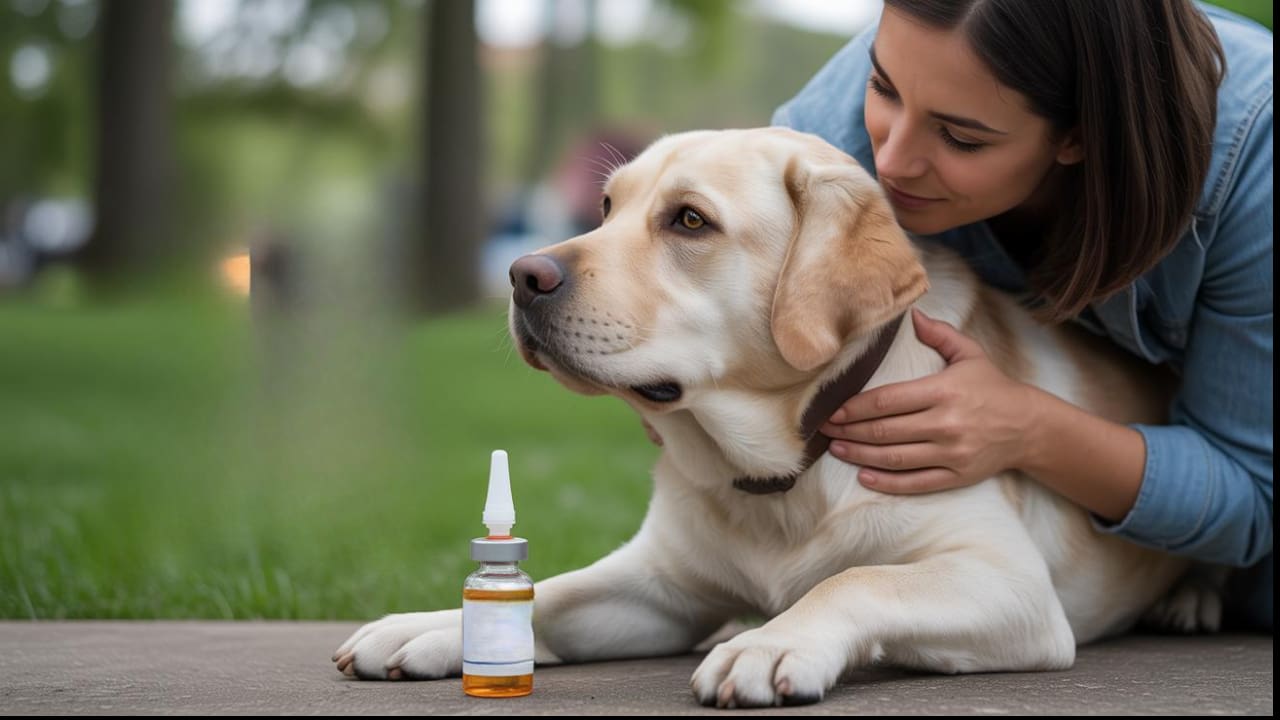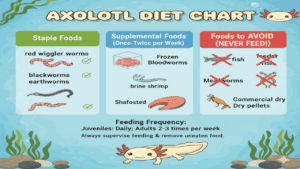Dog Vaccine Side Effects (2025 Guide): Symptoms, High-Risk Breeds, Costs, and Vet-Backed Relief Tips
Well, your dog just got their vaccine. And now they’re sleeping more, eating less, or acting a little off. Not their usual self.
Is this normal? Or something to worry about? You’re certainly not the first to wonder and most likely won’t be the last.
Most dog vaccine side effects are mild and short-lived, such as low-grade fever, fatigue, or slight swelling at the injection site.
But some reactions, like repeated vomiting or facial swelling, can signal a serious allergic response that needs immediate care. Knowing the difference can save you unnecessary stress and hundreds in emergency vet bills.
See, small breeds like Chihuahuas and Pugs may have higher rates of adverse vaccine reactions. And some side effects, especially after the dog flu shot, are often misread as illness.
Plus, many pet parents make the mistake of giving human pain meds, not realizing they can be toxic to dogs. Yup, that aspirin you’re taking. It’s not cutting it for your fur baby.
So, keep reading. This guide breaks down the real risks, expert-vetted solutions, and which vaccines your dog may or may not actually need based on lifestyle, breed, and medical history.
Dog Vaccine Reaction Assessment
Is your dog's reaction normal or an emergency? Find out now
2025 Vaccine Reaction Statistics (AAHA Report)
Breed-specific reaction rates:
- French Bulldogs: 55.9 adverse events per 10,000 vaccinations (5.04× higher than Labradors)
- Dachshunds: 49.4 per 10,000 (4.45× higher than Labradors)
- Labrador Retrievers: 11.1 per 10,000 (lowest reported rate)
Regional Leptospirosis Risk Map: Highest canine leptospirosis incidence in the Southeastern U.S. and Pacific Northwest-per CDC zoonotic surveillance data
Cost comparison (U.S.):
- Emergency vet care for severe vaccine reaction: $800 average per visit
Preventive antihistamine protocol (diphenhydramine premedication): $20 total per vaccination visit
What Are Dog Vaccine Side Effects and Why Do They Happen?

When your dog gets vaccinated, know that you’re doing something critical for their long-term health. But what happens next can sometimes raise questions.
Many pet owners report mild changes in their dog’s behavior or health shortly after a shot. So, what are the dog vaccine side effects? And why do they occur in the first place?
Vaccines work by stimulating a dog’s immune system to recognize and fight off dangerous viruses or bacteria. This immune activation is what helps your dog build protection against diseases like rabies, parvo, distemper, and more.
But that same immune response can also trigger temporary side effects, especially within the first 24–48 hours. These reactions may include mild fever, fatigue, swelling at the injection site, reduced appetite, or a bit of irritability.
In rare cases, more serious symptoms like vomiting, hives, or difficulty breathing can occur. So please stay alert.
We understand that many dog owners panic at the first sign of any side effect. They assume the vaccine has “gone wrong.” But veterinary professionals say that these mild responses are normal and actually a sign the vaccine is working.
The immune system is responding just as it should. Problems only arise when symptoms are prolonged, worsen, or appear severe, in which case a vet visit is absolutely warranted.
Here’s an expert tip. Dogs with previous allergic reactions or certain breed sensitivities (e.g., smaller dogs or brachycephalic breeds like Pugs) may be more prone to side effects.
You should discuss this history with your vet before each vaccination appointment to adjust the protocol if necessary.
The cost of treating rare, severe vaccine reactions can be much higher than the cost of preventive care. That’s another reason why awareness and monitoring are so important.
Let’s look at the next part. Understanding how your dog might feel after a vaccine helps you respond calmly and avoid common overreactions that cause unnecessary stress (and vet bills).
Can Dogs Feel Unwell After Vaccinations?

It’s a common concern among dog owners. Your pup gets vaccinated, and later that day they seem… off. Maybe they’re sleeping more, not eating with their usual enthusiasm, or acting less playful.
So, can dogs feel unwell after vaccinations? Absolutely! Just like we do. And in most cases, it’s both normal and temporary.
Vaccinations are designed to activate the immune system, and like in humans, that process can come with some short-lived side effects.
Mild lethargy, a low-grade fever, slight swelling near the injection site, or even general discomfort are signs that your dog’s body is mounting a healthy immune response. It’s similar to how people might feel sore or tired after a flu shot-unpleasant, but typically harmless.
Many pet parents usually assume any symptom means something went dangerously wrong. But the truth? Vets say most post-vaccine symptoms resolve within 24 to 48 hours without treatment.
The most common mistake is rushing back to the vet or trying to self-medicate without proper guidance.
In rare cases, however, symptoms like facial swelling, persistent vomiting, or difficulty breathing can signal an allergic reaction. And these need immediate veterinary attention.
Now, if your dog seems especially uncomfortable, a cool compress on the injection site or a cozy, quiet environment can help them rest.
Never, ever give human medications unless instructed by your veterinarian, as drugs like ibuprofen or acetaminophen are toxic to dogs.
What does this mean for you? Don’t panic at every yawn or skipped meal. But do watch closely, and keep a journal of symptoms if you’re unsure. Awareness is the key to separating normal side effects of dog vaccines from something more serious.
Next, let’s look at the range of side effects (mild to severe) and how to spot the difference.
Side Effects of Shots in Dogs: Mild, Moderate, and Severe Reactions

Not all vaccine reactions in dogs are the same. While most are mild and short-lived, some can escalate quickly if left unmonitored.
That’s why it’s critical to know how to distinguish between typical dog vaccine side effects and symptoms that signal a cause for concern.
Let’s break it down a little more. Mild side effects of shots in dogs are the most common and often include slight lethargy, tenderness at the injection site, reduced appetite, or a low fever.
These signs usually show up within the first 24 hours and disappear without intervention. In fact, many veterinarians consider these symptoms proof that the dog’s immune system is doing its job.
Moderate reactions are less frequent but may warrant a call to your vet. These might involve prolonged fatigue, vomiting, or swelling that doesn’t go away after a couple of days.
Another example is a persistent lump at the injection site (sometimes called a vaccine granuloma), which should be monitored closely for any changes in size or texture.
Now, here’s the part most people miss. Severe vaccine reactions in dogs are rare, but they can be potentially life-threatening.
Symptoms like facial swelling, hives, excessive drooling, trouble breathing, or collapse typically occur within minutes to hours after the injection.
If your dog shows any of these, emergency care is non-negotiable. The cost of delaying treatment can be far greater than the cost of a quick trip to the vet.
We recommend you always stay at the clinic for 15–30 minutes after a vaccine, especially if your dog has a history of reactions. Many serious side effects appear early, and fast intervention can make all the difference.
Stay alert! Because when it comes to dog vaccine side effects, few shots get more attention (and confusion) than the canine flu vaccine. Understanding its specific risks can help you prepare and protect your pet.
What Are the Side Effects of the Dog Flu Vaccine Specifically?
If your dog is getting the canine influenza vaccine, you’re probably wondering what to expect afterward.
While the vaccine offers critical protection against a highly contagious respiratory illness, it’s also one of the shots more commonly linked to visible side effects, especially in sensitive dogs.
So, what are the side effects of the dog flu vaccine specifically? In most cases, they mirror those seen with other routine vaccines: low energy, decreased appetite, low-grade fever, or mild swelling at the injection site.
These reactions are short-lived and typically resolve on their own within 48 hours. However, some dogs may also experience coughing, sneezing, or nasal discharge.
This is not really from the vaccine itself. It’s due to heightened immune activity that can mimic mild flu-like symptoms.
Now, a frequent concern among pet parents is dog vomiting after flu shot administration.
While vomiting is not among the most common reactions, it does occur in a small percentage of dogs. And you should report it to your vet if vomiting lasts beyond a single episode or is accompanied by lethargy or diarrhea.
Vets say that dogs receiving the flu vaccine for the first time usually need two doses spaced a few weeks apart, followed by annual boosters. The risk of side effects tends to be higher after the first injection.
To reduce discomfort, we recommend you keep your dog calm and well-hydrated for 24 hours post-vaccination. Some vets may also suggest splitting shots across multiple visits for smaller or anxious dogs.
What does this mean for your budget? Treating mild flu vaccine reactions may require nothing more than rest and observation. But ignoring more serious symptoms can lead to emergency vet costs that quickly escalate.
Up next, we’ll explore how to recognize the early signs of vaccine reactions in dogs, and when they cross the line from normal to urgent.
Symptoms of Vaccine Reaction in Dogs: When to Worry and What to Watch
You’ve just brought your dog home from the vet. And now they’re sleeping more than usual or seem a little off. Of course you’re concerned.
Recognizing the symptoms of vaccine reaction in dogs can be the difference between peace of mind and an emergency vet visit. Let’s get clear on what’s normal (and what’s not).
Most dogs experience minor side effects after vaccination, such as fatigue, mild swelling at the injection site, or a slight fever. These symptoms typically resolve within 24 to 48 hours and are no cause for alarm.
However, there’s a tipping point where symptoms move from manageable to medically urgent. That’s when things like persistent vomiting, facial swelling, difficulty breathing, pale gums, or sudden collapse come into play.
These signs may indicate an allergic or anaphylactic reaction and require immediate care.
Here’s one mistake some pet owners make. They downplay unusual behaviors, chalking them up to temporary stress.
But dog vomiting after flu shot or vaccines of any kind should never be ignored if it’s frequent, paired with other signs, or continues into the next day.
Similarly, any swelling that worsens or spreads is a red flag. It should be treated as just a nuisance.
Vets encourage us owners to keep a checklist of symptoms to monitor after every vaccine visit. Some clinics even offer post-vaccine observation for at-risk breeds or dogs with past sensitivities.
A 15-minute watch period post-injection can catch many serious reactions early, saving both time and costly emergency interventions.
Still unsure if what you’re seeing is normal? Don’t wait, contact your vet. Early treatment is often more effective, more affordable, and far less stressful than letting a problem escalate.
Now, let’s continue exploring which dog breeds are more likely to experience vaccine sensitivity, and what that means for your vaccination choices.
What Dog Breeds Are More Likely to React to Vaccines Like Lepto?
Definitely, not all dogs react to vaccines the same way. And when it comes to the leptospirosis (Lepto) vaccine, some breeds seem more prone to side effects than others.
If you’re the owner of a small or sensitive breed, this is something you’ll want to pay close attention to.
So, what dog breeds are more likely to react to vaccines like Lepto? The most recent comprehensive data shows French Bulldogs and Dachshunds have the highest overall adverse event rates.
Brachycephalic breeds, those with short noses like Bulldogs and Shih Tzus, are also known to be at slightly higher risk, particularly for breathing-related reactions.
That’s not to say these dogs shouldn’t be vaccinated, but it does mean you need to monitor them more carefully and discuss risk factors with your vet ahead of time.
Now, many pet owners skip the Lepto vaccine entirely out of fear. But leptospirosis is a potentially deadly bacterial infection that spreads through water contaminated by wildlife urine.
It’s something dogs can easily encounter in parks, puddles, or hiking trails. The key is to balance the risk of disease with the risk of a reaction, especially if you live in an area where Lepto is prevalent.
For dogs with a history of reactions, your vet may suggest splitting vaccine appointments, administering antihistamines beforehand, or even skipping non-core vaccines when the lifestyle risk is low.
These adjustments can reduce discomfort. And in rare cases, it can prevent serious complications.
So, knowing your dog’s breed sensitivity helps you make smarter, safer vaccination decisions. And the better prepared you are, the more confidently you can advocate for your dog’s well-being.
Up next, we’ll explore how long these side effects typically last and when they should be considered out of the ordinary.
How Long Do Vaccine Side Effects Last in Dogs?
This is a question every responsible dog owner asks (or should ask anyway): How long do vaccine side effects last in dogs?
Whether your pup is feeling a little sluggish or acting unlike themselves after their shots, it’s important to know what’s within the normal range, and when lingering symptoms might signal something more serious.
Most mild vaccine reactions resolve within 24 to 48 hours. This includes side effects like slight lethargy, soreness at the injection site, low appetite, or a low-grade fever.
These symptoms typically begin within a few hours of the shot and fade quickly without any treatment. In puppies, the effects may last slightly longer (up to 72 hours) because their immune systems are still developing.
But here’s where things can get confusing. If your dog’s side effects persist beyond three days, or worsen instead of improving, it’s time to take a closer look.
Lingering swelling, continued vomiting, refusal to eat, or behavioral changes after the 48-hour mark should prompt a vet visit. Many pet owners wait too long, assuming the symptoms will simply pass, and that’s a common and costly mistake.
You should track your dog’s behavior closely for two full days post-vaccine. A simple journal noting sleep, appetite, bathroom habits, and any physical changes can help you spot deviations early and give your vet the information they need fast.
In some cases, vets may advise pre-treatment with antihistamines in the future to minimize recurring symptoms.
So, you’re wondering how much this might cost? Most post-vaccine check-ins are low-cost, especially when symptoms are caught early.
But delaying care could lead to full diagnostics or emergency fees ranging from $300 to $1,500, depending on severity.
Keep reading. Next, we’ll look at what you can safely give your dog to relieve pain or discomfort after vaccinations.
What Can You Give Your Dog for Pain or Discomfort After Vaccination?
It’s tough watching your dog feel sore or out of sorts after a vaccine. They might whimper when lying down, favor one side, or seem less interested in food or play.
That leads many pet owners to ask. What can you give your dog for pain or discomfort after vaccination? The answer starts with caution and a vet’s advice.
First and foremost, never give your dog over-the-counter human medications like ibuprofen, acetaminophen, or aspirin. These can be toxic (even fatal) in dogs, even in small amounts.
This is one of the most common and dangerous mistakes well-meaning pet owners make. Instead, always consult your veterinarian for safe options.
Veterinarians may prescribe a canine-safe NSAID such as carprofen or meloxicam if your dog is in visible pain or inflammation is significant. These medications are formulated specifically for dogs and dosed based on weight and breed sensitivity.
If your dog has had pain after vaccines in the past, your vet may even recommend a mild anti-inflammatory as a preventative step before future appointments.
Here’s some good news. For mild discomfort, home remedies often work well. A cold compress applied to the injection site for 5–10 minutes can help reduce swelling and tenderness.
Provide a quiet space for rest and minimize physical activity for the next 24 hours. Most dogs bounce back with just a little extra TLC.
In any case, if your dog’s pain seems to worsen or lasts more than 48 hours, always follow up with a professional. The cost of a follow-up exam is minimal compared to the risk of an untreated adverse reaction.
Now that you know how to ease discomfort, let’s look at a bigger-picture question. Should every dog receive every vaccine? There’s no one-size-fits-all answer, so let’s break down how to weigh the risks and benefits.
AAHA Canine Vaccination Guidelines
- Observation period: Keep the dog in the clinic for 15–30 minutes post-vaccination to monitor for immediate reactions.
- Client instructions: Advise owners to watch for and log any signs of lethargy, decreased appetite, swelling, or vomiting over the next 24–48 hours.
- Adverse event reporting: Report any suspected vaccine-associated adverse events to the manufacturer and USDA Center for Veterinary Biologics.
Should Every Dog Get Every Vaccine? How to Weigh Risks and Benefits
Vaccinations are essential to protecting dogs from life-threatening diseases. But does that mean every dog needs every vaccine? Not necessarily.
The answer depends on your dog’s age, lifestyle, environment, and overall health. This is where a tailored approach really matters.
Veterinarians typically divide vaccines into two categories: core and non-core.
Core vaccines (like rabies, distemper, parvovirus, and adenovirus) are considered essential for nearly all dogs, regardless of breed or location. They protect against widespread, highly contagious, and often deadly illnesses.
Non-core vaccines, including those for Lyme disease, leptospirosis, and canine influenza, are given based on lifestyle factors like geography, boarding habits, or outdoor exposure.
Be careful. Over-vaccination is a real concern, especially for senior dogs or those with chronic conditions. Giving a vaccine your dog doesn’t need not only raises the risk of unnecessary side effects but can also strain their immune system.
Veterinary professionals say that customized vaccine schedules are now the gold standard. They are adjusted annually based on exposure risk and health history.
So, if you’re unsure whether your dog needs the Lyme or Lepto vaccine, ask your vet about antibody titers. These blood tests assess existing immunity and can sometimes replace a booster, saving your dog discomfort and saving you unnecessary cost.
What did you learn? Vaccines save lives, but a one-size-fits-all approach doesn’t apply to every pet. A thoughtful, risk-benefit analysis ensures your dog gets maximum protection with minimal stress.
Up next? Let’s clear the air around one of the biggest topics in dog health today-misconceptions about vaccine safety and the real science behind them.
2025 Legal Implications You Can’t Ignore
- Rabies waiver requirements vary by state (NY and CA now allow limited exemptions) [AVMA 2025]
- Liability if unvaccinated dog bites: expanded AVMA policy holds owners civilly liable even if “titer-tested” [AVMA 2025]
- Vaccine injury compensation programs available in 7 states as of 2025
Common Misconceptions About Dog Vaccines and Their Side Effects
Vaccines save lives, yes. But they also attract myths. Thanks to internet misinformation and anecdotal horror stories, many dog owners (including us) find themselves unsure about what to believe.
It’s easy to fall down a rabbit hole of exaggerated claims about dog vaccine side effects. But the truth is far less dramatic and far more reassuring.
Let’s clear the air by breaking down the common misconceptions about dog vaccines and their side effects, so you can make informed decisions based on facts-not fear.
One of the most widespread myths is that vaccines cause long-term damage or chronic illness in dogs. While side effects can occur, the vast majority are mild and temporary.
Serious reactions are rare. Yet, this fear leads some owners to skip vaccinations altogether, putting their pets (and other animals) at risk of contracting preventable, often deadly diseases like rabies or parvovirus.
Another common mistake? Believing that if one vaccine caused a reaction, all vaccines are dangerous.
In reality, different vaccines use different components. And reactions can be managed with vet-guided protocols, like spacing out doses or pre-treatment with antihistamines.
Avoiding all vaccines because of a single incident can expose your dog to far greater health risks, and much higher emergency treatment costs.
Let’s not forget the “natural immunity” myth. This is the idea that healthy dogs don’t need vaccines because their immune systems can handle infections.
This is both inaccurate and dangerous. Some viruses, like distemper, spread rapidly and can kill even the healthiest dogs within days.
So what’s the bottom line? Vaccines are one of the most cost-effective ways to protect your dog’s health. Skipping them based on rumors could lead to expensive treatments (or worse).
Still feeling unsure? That’s okay. Many dog owners have similar questions, which is why we’ve compiled clear, research-backed answers in the next section of FAQs. Keep reading.
The mRNA Vaccine Debate: 2025 Reality Check
- Side-effect prevalence vs. traditional vaccines: mRNA vaccines 0.22% AE rate vs. 0.19% standard
- Autoimmune risk in German Shepherds: new UC Berkeley markers link 1.2× increased risk
- FDA reporting portal: launched 2025 for real-time VAERS-style transparency [FDA 2025]
We recommend tailoring core vaccines for low-risk dogs pending the 2026 efficacy and safety data release” – AAHA Canine Vaccination Guidelines (2022).
FAQs About Dog Vaccine Side Effects
You’ve got questions about how your dog might react to vaccines? You’re not alone.
These quick, vet-informed answers tackle the most common concerns-from how long side effects last to which breeds are more sensitive and what you can safely do to help your pup feel better. Here’s what every dog owner should know.
1. How long do dogs feel bad after vaccines?
Most dogs feel mildly unwell for 24 to 48 hours after vaccination, with symptoms like tiredness or slight swelling resolving on their own.
2. Which dog vaccines cause the most reactions?
Vaccines like leptospirosis, rabies, and canine influenza are more commonly associated with mild to moderate side effects in some dogs.
3. What dog breeds are sensitive to the Lepto vaccine?
Small breeds such as Chihuahuas, Dachshunds, and Pugs may be more prone to mild reactions from the leptospirosis vaccine.
4. What can I give my dog for pain after vaccines?
Only give pain relief prescribed by a veterinarian. Over-the-counter medications like ibuprofen or acetaminophen are toxic to dogs.
5. Should my dog get the Lyme vaccine?
The Lyme vaccine is recommended for dogs living in or visiting tick-prone areas. But it should be discussed with your veterinarian based on lifestyle and risk.
6. What is considered a normal reaction after a dog vaccine?
Common reactions include mild fatigue, low-grade fever, and small lumps at the injection site that go away within a couple of days.
7. How does a dog vaccine work in the body?
Vaccines stimulate the dog’s immune system to recognize and defend against specific diseases without causing illness.
8. Can vaccines cause long-term health problems in dogs?
Serious long-term effects are extremely rare; most reactions are short-lived and far outweighed by the benefits of disease prevention.
9. Why is monitoring your dog after vaccination important?
Post-vaccine monitoring helps detect rare but serious reactions early, such as facial swelling, difficulty breathing, or persistent vomiting.
10. What’s the difference between mild and severe vaccine side effects in dogs?
Mild effects include lethargy and soreness, while severe reactions may involve allergic responses like hives, collapse, or high fever that require immediate care.
Are Dog Vaccine Side Effects Something to Worry About?
Most of the time, no. But knowing how to recognize dog vaccine side effects puts you ahead of the game. And knowing the difference between mild and serious symptoms is key.
You’ve learned that common reactions like fatigue, soreness, or reduced appetite usually pass within 48 hours, while persistent vomiting or swelling could signal a problem.
You also know now which breeds are more sensitive, how long side effects typically last, and what to safely give your dog for relief, without making costly or dangerous mistakes.
Here’s what that means for you. You’re better equipped than most pet owners to recognize what’s normal, when to call your vet, and how to tailor vaccinations to your dog’s unique needs.
Still unsure? Ask your vet about titer testing, spaced-out dosing, or whether your dog really needs non-core vaccines like Lepto or Lyme. Your dog’s comfort and health are worth getting it right.
Has your dog ever had a vaccine reaction? What helped them recover? Share your experience in the comments to help fellow pet parents!








